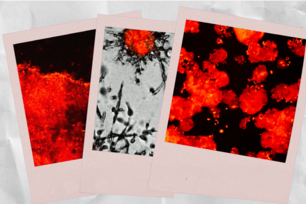Transformation of Normal Human Cells into Cancer Cells
CAMBRIDGE, Mass. — Researchers led by Dr. Robert A. Weinberg of the Whitehead Institute for Biomedical Research have made the first genetically defined human cancer cells, according to a report published in the July 29 issue of Nature. This achievement brings scientists one step closer to understanding the complex process by which human cells become cancerous.
The genetically defined tumor cells will give scientists an important new window on the biochemical and physiologic changes involved in the development of human cancer, Dr. Weinberg says. They promise to be particularly useful for exploring the later changes in tumor development including the genetic changes that lead to metastatic disease, a problem that has been difficult to study in the past.
The conversion of normal cells into tumor cells involves changes in the activity of a number of distinct different genes and proteins in a cell. Although scientists have been able to transform normal mouse cells into tumor-forming cells by introducing several cooperating oncogenes (cancer-causing genes) into these cells, human cells have been resistant to such transformation.
"We wondered what it was about the mouse cells that made them so easy to transform and hypothesized that it might have something to do with the presence of the enzyme telomerase," says Dr. William C. Hahn, a postdoctoral fellow in the Weinberg laboratory. Dr. Hahn and Dr. Christopher M. Counter, a former Whitehead postdoctoral fellow now at Duke University Medical Center, are the lead authors on the Nature paper.
Two years ago, Dr. WeinbergÍs group and others identified the gene that codes for the key component of human telomerase, an enzyme that prevents the natural shortening of chromosomes during cell division. When the telomerase gene is switched on, cells continue to grow and divide indefinitely. Such rampant, unchecked cell growth is characteristic of cancer, says Dr. Hahn, who is also an oncologist at the Dana-Farber Cancer Institute. Interestingly, in humans, the telomerase gene is turned off in most normal cells and is turned on in most cancer cells. But in mice, the telomerase gene is always on.
"The next question we asked ourselves was whether telomerase is on in cancer cells because the cells need the enzyme to grow or whether it just comes along for the ride," Dr. Hahn explains.
To answer this question, they generated cell lines that expressed two collaborating oncogenes, the large-T oncoprotein and the ras oncogene. Oncogenes are often mutant versions of normal genes (called proto-oncogenes) that participate in regulation of the cell cycle. When the genes are altered due to genetic or environmental factors, they encourage runaway cell proliferation.
In the laboratory, the Whitehead scientists found that cell lines genetically engineered to express the two oncogenes changed appearance, but did not transform into tumor cells. However, cell lines that expressed the telomerase gene in addition to the oncogenes developed into tumors.
"One important conclusion from this study is that there are not an infinite number of cellular changes separating cancer cells from normal cells, but that tumor development is a finite process," Dr. Hahn adds. The ability to transform cells experimentally will help scientists determine the finite number of molecular pathways that produce the abnormal traits characteristic of tumor cells.
Because the tumor cells generated in the Weinberg lab are not metastatic, they will actually be a useful baseline for studying the process of metastasis. Scientists can express a battery of individual genes in these baseline tumors and determine exactly which genes cause the tumors to invade neighboring tissues.
The Weinberg lab also is exploring the molecular mechanism that activates the telomerase gene in cancer cells, a subject of immense interest to cancer researchers.
This study was supported in part by Merck and Co., the U.S. National Cancer Institute of the National Institutes of Health, a Damon Runyon-Walter Winchell Cancer Research Foundation Postdoctoral Fellowship (Dr. Hahn), and a Human Frontiers Postdoctoral Fellowship (Dr. Roderick L. Beijersbergen).
Citation
Hahn, W. C., Counter, C. M., Lundberg, A. S., Beijersbergen, R. L., Brooks, M. W., & Weinberg, R. A. (1999). Creation of human tumour cells with defined genetic elements. Nature, 400(6743), 464-468.
The Whitehead Institute is a non-profit, independent basic research and teaching institution recognized worldwide for outstanding contributions to cancer and AIDS research, developmental biology, infectious disease, basic molecular and cell biology, and the new field of genomics. The Whitehead Institute is affiliated with the Massachusetts Institute of Technology in its teaching activities, but wholly responsible for its own research programs, governance, and finance.
Topics
Contact
Communications and Public Affairs
Phone: 617-452-4630
Email: newsroom@wi.mit.edu


